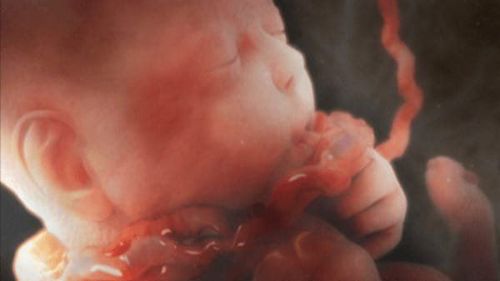This is an automatically translated article.
Pain during labor is perceived differently by each woman depending on their physiology, psychology, and pain threshold. However, 70% of women feel the pain is severe or unbearable. Epidural Anesthesia is the most effective and suitable pain relief technique for pregnant women and fetuses.1. What is an epidural?
Giving birth has always been considered a woman's vocation. However, labor pain is always a fear and obsession of pregnant women. The technique of epidural anesthesia is performed regularly at Vinmec hospital, helping mothers reduce pain by 70-80%, so that the birth process becomes easier. However, many mothers are wondering whether to use this method or not. Let's answer frequently asked questions about "Painless delivery" to make the right choice.Technique of Epidural Anesthesia will be performed by a specialist Anesthesiologist. Your doctor will place a very small catheter into a space that surrounds the spinal cord, called the epidural, in the lumbar spine. During this procedure, the woman has almost no pain. The catheter is fixed to the back of the mother. The anesthetic will be continuously pumped through the catheter by an automatic electric cylinder at a very small and steady rate until the baby is born. Pregnant women will have less pain, 70-80% less pain than usual.

Kỹ thuật Gây tê ngoài màng cứng giúp các bà mẹ giảm đau 70-80%
2. When can Epidural Anesthesia be performed?
The obstetrician or midwife decides the best time to perform an epidural. Typically, an epidural is performed when the cervix is dilated from 3cm to 8cm, but it can be done earlier if the pain is severe, or in some cases the mother's medical condition.3. How is epidural anesthesia performed?
The Anesthesiologist will examine you before the procedure. Pre-anesthesia examination was performed before the procedure to identify contraindications to the technique. This work should be done when the pregnant woman enters the last month of pregnancy to prepare in advance for the birth, so as not to cause inconvenience during the examination when the mother is in labor pain. Pre-anesthesia examination is performed regularly when pregnant women visit periodically at Vinmec Hospital as well as using the maternity package.During anesthesia, the mother is instructed to sit with her head bowed – arch her back or lie on her left side with her head bowed – with her knees pressed close to her abdomen. The doctor finds the epidural space (between the two vertebrae), the woman is anesthetized at the needle puncture site, this action can cause pain in the back skin like a normal injection. The doctor will then thread a very small plastic catheter called a catheter into the epidural space, the catheter is not uncomfortable for the mother and is fixed along the back. When the catheter is inserted, the mother will feel a feeling of pressure in the buttocks or legs but only transient.
Anesthesia will be injected through the catheter into the epidural space, the mother can feel a cool flow under the back and the pain will subside after 10 minutes.
If emergency cesarean section is required, use the available epidural catheter to anesthetize the operation and reduce postoperative pain.
4. What pregnant women cannot do epidural?
Epidural anesthesia is not performed in cases of high fever, skin infections at the injection site, such as pustules on the back, skin infections ...Pregnant women with blood clotting disorders are also tested. contraindications to the use of this technique.
Some maternal diseases are relatively contraindicated for epidural anesthesia such as disc herniation, sciatica, scoliosis.
Absolutely contraindicated when pregnant women have neurological diseases or are bleeding or in an emergency.

Sản phụ có xét nghiệm rối loạn đông máu có chống chỉ định sử dụng kỹ thuật này
5. What sensations may be experienced during Epidural Anesthesia
You may experience some temporary discomfort due to a drop in blood pressure, sometimes chills or itching.Pregnant women after pain relief may have a feeling of numbness in their legs, their legs are a bit heavy or difficult to lift. In addition, the mother may find it difficult to urinate, requiring a urinary catheter.
The above disadvantages or side effects can occur after an epidural, the anesthesiologist will provide specific treatment to minimize these effects.
6. What are the risks of an epidural?
Headache after epidural: very rare. This symptom occurs most often due to dural perforation, which can be encountered in cases where the procedure is difficult. This risk will be minimized when the mother keeps the position and cooperates well with the doctor during the implementation of the epidural.If a headache occurs, pregnant women are also completely assured because there are many effective methods to treat such as intravenous fluids, pain relievers or injection of the mother's blood into the epidural space to patch the hole.
Back pain is something that is often concerned by pregnant women and their relatives when being consulted about Epidural Anesthesia. There are currently no studies showing that postpartum back pain is caused by an epidural. In fact, 50% of women after giving birth spontaneously without using an epidural still have back pain after giving birth. Common causes are: changes in the spine during pregnancy, stretching of ligaments in the lumbar spine, inappropriate posture on the delivery table due to pain... Epidural anesthesia usually causes pain only at the injection site, and it goes away on its own in 48h.
Infectious complications are extremely rare (1/145,000) Especially in a sterile environment and good infection control at Vinmec hospital system
7. Is epidural anesthesia dangerous for the baby?
Epidural anesthesia completely does not affect the baby. The anesthetic used to numb the baby has no effect on the baby. An epidural only blocks nerve transmission (feeling pain) in the mother, not toxic to the baby.
Gây tê ngoài màng cứng hoàn toàn không gây ảnh hưởng đến thai nhi
8. Does an epidural affect labor?
An epidural may prolong labor longer than usual and may increase the risk of an assisted delivery, but an epidural does not increase the rate of cesarean section. In contrast, epidural anesthesia helps pregnant women reduce pain during labor. The labor and delivery becomes easier, the mother is rested and does not lose strength, the psychological comfort without worry and fear helps the process of labor to be the best.9. Does epidural fail?
Occasionally, there are cases of unsuccessful epidurals performed even by a well-trained and experienced anesthesiologist, the failure rate is still there. There are cases due to local factors, the structure of the back spine, even if the epidural catheter has been placed, injected with a full dose, the analgesia may not be completely (may only relieve pain on one side or not at all). analgesic effect). However, this percentage is very low.Vinmec's maternity package includes all steps of pre-anesthesia, epidural anesthesia performed by a team of experienced, professional anesthesiologists who will help pregnant women go through an emergency. Safely painless delivery.
Please dial HOTLINE for more information or register for an appointment HERE. Download MyVinmec app to make appointments faster and to manage your bookings easily.
The article references the source: Protocoles en Anesthie et Analgésie Obstétricales – CARO 2018












